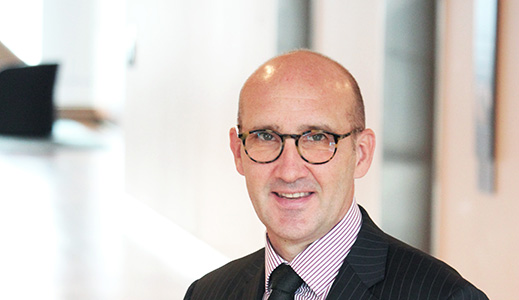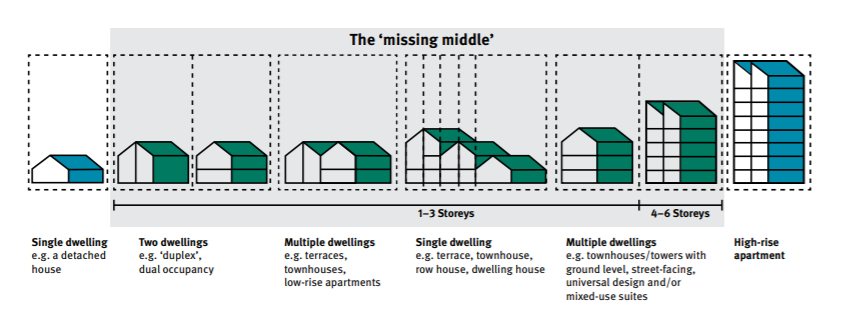Apr 01 2020, by Fleetwood Urban (Marketing)
State of Play
Right across Australia, the sands of urban planning are shifting. But where exactly are they shifting to? And what should we, as an industry, be conscious of? To provide some insights, Fleetwood Urban reached out to two senior State Government planning officials: Kerry Doss, Deputy Director – General Planning Group at Queensland’s Department of State Development, Manufacturing, Infrastructure and Planning; and Fiona Morrison, Director Open Space at NSW Department of Planning and Environment. This is an edited summary of what they told us.

Kerry Doss - Deputy Director, General Planning Group at Queensland’s Department of State Development, Manufacturing, Infrastructure and Planning

Fiona Morrison - Director Open Space at NSW Department of Planning and Environment
FLEETWOOD URBAN: When it comes to urban development over the next decade, what are the biggest considerations for your Department?
KERRY DOSS (QLD): Three of our biggest considerations are planning for growth, ensuring easy access to open spaces and having a transparent and accountable planning system.
With continual growth in South East Queensland, major centres along the Queensland coast and some inland areas, the challenge is to ensure urban development is well planned. We need to focus on more sustainable land use patterns, and ensuring new developments are located near existing services.
High quality green and open spaces in new development is a great attractor; it helps to create a sense of ‘place’ and there are dividends in terms of sale price, reputation, community building and other success factors. It also helps to create healthier and more active communities. With obesity identified as a major health issue for Queensland, and Australia in general, all sectors of government and industry should be working towards that.
Transparency is another key aspect. The community and industry are demanding better consultation and the more advanced councils are now making information available online, like Sunshine Coast Council’s Development.i, which was partly funded by the Department’s Innovation and Improvement Fund. Last year, we also introduced changes to the State’s planning framework which now requires councils to publish how much money they’ve collected from developer infrastructure charges and where that money is being spent. This creates a better understanding of how development activity benefits the broader community through improved infrastructure such as public parks and land for community facilities.
FIONA MORRISON (NSW): The NSW Government has a bold vision to create the world’s best places. This means focussing on protecting, restoring and building public spaces and parklands that improve people’s lives well into the future. It’s about creating public spaces that are welcoming to every member of the community because they’re more inclusive, cooler, greener and water sensitive. We want to develop a planning culture and approach that strikes a balance between the necessities of a growing population, environmental sustainability and the open space and recreational needs of the community.
FW: Where are the biggest opportunities to do things better?
KD: Households are changing. We have an older population and the traditional two-parent households are declining, so we need to make sure housing styles and choices change along with them. The South East Queensland Regional Plan talks about a term called the ‘missing middle’, a range of housing types that help to increase density in areas that are already well-serviced. This can include secondary dwellings, duplexes, multi-unit or clustered housing that are compatible with detached single-family homes. We can integrate these into existing suburbs and provide greater housing choices. Of course, we also need to take our communities on this journey and get residents to start thinking about the type of housing they might need in the future.
FM: Landscape architects and other design professionals are essential to the delivery of well-planned public spaces. Early integration of the thinking about how communities use public spaces now and into the future is crucial. We should all strive to create places that are beautiful, welcoming and resilient. This will require innovation and bravery and it will demand us to work together. A good example is the NSW Government’s Parks for People program. It aims to improve access to high-quality open space by creating parks with community needs and exemplary design at the core. It’s a new way of working collaboratively with local communities, to deliver on the NSW Government’s promise to create a network of connected parks and open space and improve the quality of existing parks.

FW: What would you like to see more of when it comes to the way urban areas and greenspaces are developed?
KD: Designs created with the climate and the environment in mind. Many industry leaders are already integrating natural features into their work, incorporating water sensitive urban design and making the most of the existing greenspace. We also need to ensure we have street trees for shading and that footpaths have been designed to respond to the needs of users. Urban areas need to be walkable and inclusive so parents with a pram, an elderly person with a mobility aid, or kids on foot or bikes on their way to school can move easily around their area. Getting greener infrastructure on-site should be a challenge everyone takes up.
FM: I’d like to see bold ideas and innovations for better public spaces. All brought to life through increased public engagement and taking heart from the community’s passion – because they’re asking for better places and beautiful design. We can better manage the incredible, unique and natural assets around us by protecting what we have, optimising the spaces we love and growing more of what we want as a community. We also need to give priority consideration to Government-owned land that should be preserved as parkland or public space to strengthen communities, promote healthy living and generate participation in creative and cultural activities.
FW: What would you like to see less?
KD: Fewer bad outcomes that leave a poor legacy. We’re no strangers to natural disasters in Queensland and it’s vital our new developments are delivered in suitable locations with the impact of natural hazards in mind. The most recent fire season has been a wake-up call across Australia.
FM: Less repetition of the past, while also ensuring we’re protecting the character of our places. People are intrinsic to that character, so by working with communities we can learn to respond in a manner that enriches our experience of place, ensuring future character is both resilient and unique.
FW: What is the State Government’s role in helping to steer the next decade of urban development?
KD: We’re committed to better planning outcomes for Queensland communities. The State has a contemporary planning framework that provides the right balance of regulation and facilitation. However, we need to be constantly scanning the planning horizon for changes and respond to those.
As an example, the State Assessment and Referral Agency, affectionately known as SARA, is widely regarded as the most effective and efficient system for dealing with state agency approvals in Australia. As a centralised coordinating agency, it ensures the various approvals needed for development are coordinated, consolidated and rationalised before they’re provided back to a council or applicant.
We’re also very considered when it comes to thinking about State-level policy, especially given the size of the State and its decentralised and regionalised population base. After all, a policy outcome that works for South East Queensland may not necessarily work in Cairns, Toowoomba or Longreach.
FM: The NSW Government is committed to the creation of great public spaces. Supporting the delivery of these is a range of Government initiatives managed by the Department, including Everyone Can Play, Metropolitan Greenspace and the Parks for People program, that partner with councils across NSW. Beyond the financial support of the Department’s projects, tools such as the draft Greener Places and Everyone Can Play guidelines also provide support to the planning, design and delivery of public spaces that can be loved by all.
FW: How optimistic are you about the future of urban development in Australia?
KD: I think we have every reason to be optimistic. We’re in a time of disruption, which is really exciting for me as a planner. Technology advancements will help inform better planning and development decisions based on more accurate data. Given the size of our State and the problems we encounter, we need to use technology to our advantage.
We need to plan for electric and driverless cars on our roads. We’re still coming to grips with the recent advances in the technology used to produce and store hydrogen as a fuel. Right now, Redland City Council is trialling a driverless bus on Karragarra Island. In Logan, drones are already delivering coffee, food, hardware and clothing. Does this mean we will need to plan for drone landing pads?
We’re also seeing more renewable energy projects powering our homes and cities. That’s changing the way we think about servicing new development. The future is bright and I can’t wait to see what the next 20 years will bring.
FM: I think Australia is heading in the right direction, but there’s always room to improve. Communities are telling us what’s important to them through initiatives like the Greater Sydney Outdoor Study. We know public spaces are vital to community cohesion, promote healthier lifestyles and build a sense of pride in our neighbourhoods. With NSW’s first ever Minister for Public Spaces (Mr Rob Stokes MP) and the Premier’s Priorities, there’s momentum towards making public space and green infrastructure not just a ‘nice to have’, but a must have. We recognise it’s vital, must be planned and designed earlier, and delivered as essential infrastructure.



